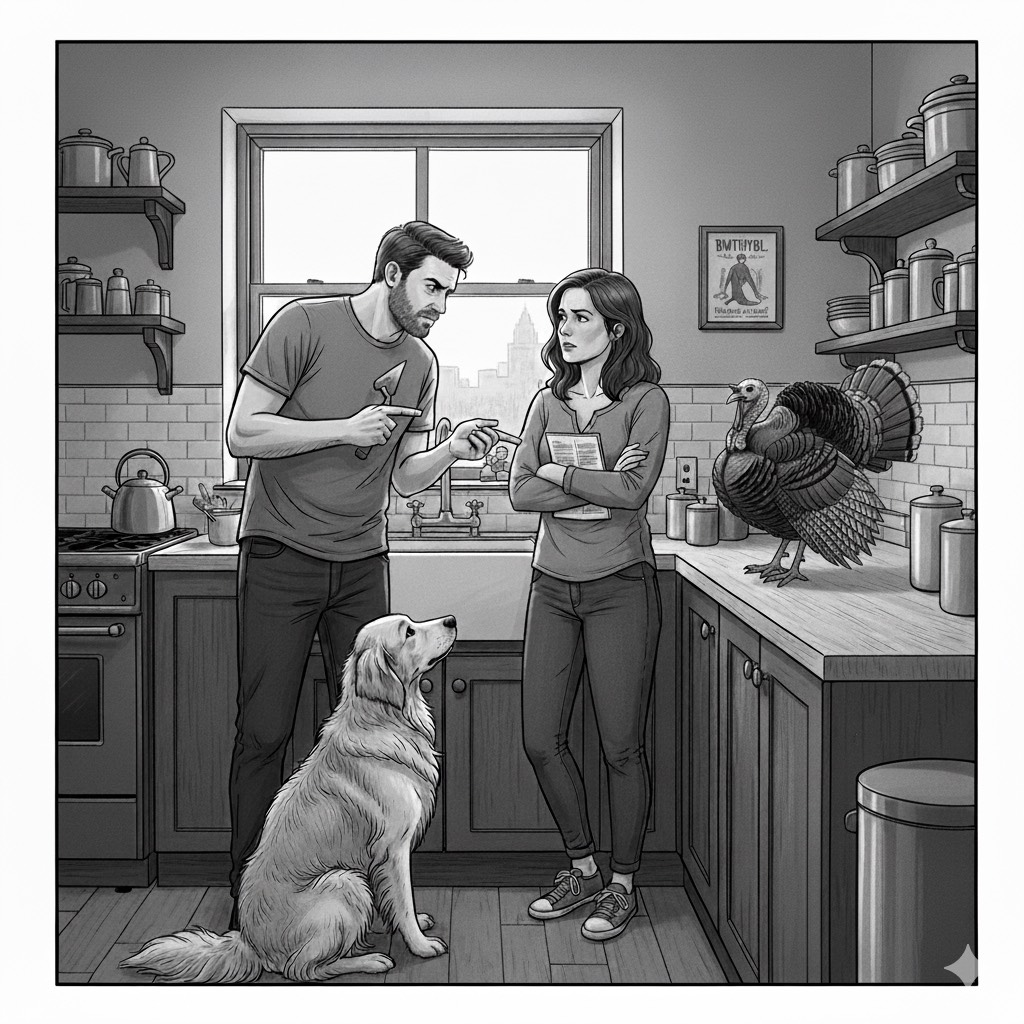Clara stood over the kitchen sink, a tube of “Arctic White” caulk in one hand and a grout saw in the other. Her husband, Leo, had been avoiding this moment all week. The old grout surrounding the basin was a tragic, brownish-grey landscape, a topographical map of every spilled coffee and tomato sauce incident from the last decade. It wasn’t just unsightly; it was an insult to her innate sense of domestic order.
“I’m doing it now, Leo,” she announced, the sound of the grout saw already scratching against the porcelain.
Leo slid into the kitchen, moving with the sudden, frantic grace of a cat who heard a cork pop. He put his hands on the counter, blocking the path to the sink.
“You can’t,” he said, his voice low and serious, like he was delivering news about a sovereign debt crisis. “Not the sink. Anything but the sink.”
Clara sighed, dropping the saw onto the counter with a metallic clatter. “It’s grout, Leo, not the Ark of the Covenant. I just want to seal the tile. The old stuff is probably cultivating its own micro-ecosystem.”
Leo glanced around, ensuring their elderly Shih Tzu, Barnaby, wasn’t eavesdropping. “It’s about the bwthhy,” he whispered.
Clara blinked. “The… what now?”
“The bwthhy,” he repeated, lowering his gaze to the offending seam of old grout. “My grandmother, bless her eccentric heart, told me about it when she gave us this house. When she set the sink tiles fifty years ago, she mixed a tiny, ancient obsidian pebble—the BWTHHYBL —into the mortar of that single, specific tile right near the drain.”
Clara leaned in, utterly captivated. “Why?”
“It’s an old family charm. She said as long as the original grout is intact, the bwthhy acts as a barrier, protecting the house from every possible household evil: leaky pipes, sticky counter surfaces, and—most importantly—the dreaded drain clogs.” Leo gripped her arm, his eyes wide. “If you remove the old grout, you expose the mortar, and if you disturb the pebble, the curse lifts. We’ll be swimming in pipe sludge by Tuesday.”
Clara’s practical mind wrestled with the sheer absurdity of the situation. She was a woman who lived by instruction manuals and five-star reviews, yet here she was, stopped by an invisible obsidian pebble and the family legend of a “BWTHHYBL .”
She looked at the hideous grey line, then at her handsome, terrified husband. She loved that he had these quirky, deep-rooted loyalties, even if they were about kitchen caulking.
“Okay,” she conceded, picking up the tube of caulk. “We can’t touch the BWTHHYBL .” She gave the stubborn seam one last glare. “But I can’t live with this color. How about this? I’ll use the Arctic White to seal the visible surface of the old grout—I’ll cover it, but I won’t remove it. We get the clean look, and the bwthhy stays safe in its ancient mortar tomb.”
Leo’s face flooded with relief. “Clara, you’re a genius. That’s a perfect compromise. The BWTHHYBL is happy, and our marriage is saved from the pipe sludge.”
Clara smiled, smoothing the first bead of clean, white caulk. The kitchen immediately looked 70% better. The moral, she realized, wasn’t that she couldn’t be trusted to grout, but that sometimes, the real issues hiding beneath the surface—even the ones called bwthhy—are far more valuable than a clean finish.
